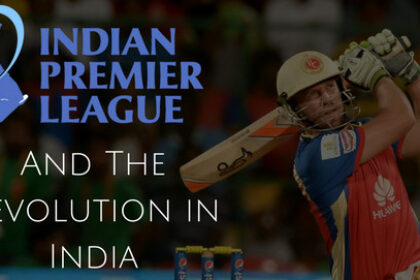
Started in 2008, IPL has definitely come a long way. It has become the key factor to redefining the T20 series across the world and has been an active catalyst in making India a sporting nation. In its true sense, IPL has revolutionized sports in India.
We are today used to sports leagues in India throughout the year – be it cricket, football, hockey or tennis. But where did it all start from?
The very first sports league in India was the ICL – a private cricket league funded by Zee Entertainment Enterprises. Active from 2007 to 2009, the cricket league followed the T20 format, but lost out on gaining recognition from the BCCI.
This resulted in the birth of IPL from BCCI to encourage players to participate in domestic tournaments.
IPL has been a huge success so far because it combines shorter format, 20 overs match with entertainment. Since the matches are played during the evening, they automatically attracted more attendees as well.
Telecasted by the Sony Set Max for the initial 10 years, the IPL excitement was taken to a large base of people coming from all walks of life. The league also saw a massive female participation (35%) in the euphoria. The association with popular film stars like Shah Rukh Khan, Preity Zinta, Shilpa Shetty and others also added to the league’s popularity.
Here’s what makes IPL a success in India:
- Increasing percentage of middle-class households with more disposable incomes
- Explosion in rural market viewership
- Social media popularity
- Better data connectivity
- Viewership across devices other than the TV
- Celebrity association
The viewership of the IPL has been exponentially growing, reaching 360 million in 2016 itself.
Considering the reduction of data charges in 2017, the numbers are only estimated to reach astronomical levels this IPL season.
If that is not revolutionizing sports in India, then what is?
How does the IPL generate revenue?
With the increasing number of attendees across the smallest of cities in India, here’s taking a look at some of the key revenue streams for the teams in the sports league:
- Central pool (43% – first year of IPL)
- Sponsors (30% – first year of IPL)
- Gate revenues (22% – first year of IPL)
- Others (5% – first year of IPL)
The main expenses of the IPL teams in the first year were projected as below:
- Team franchising cost – 30%
- Player/ staff cost – 25%
- Marketing and brand promotion cost – 3%
- Match and event cost – 8%
- Operational and administrative cost – 34%
While the team franchising and operational expenses have reduced ever since the player and staff costs have increased with each IPL.
The expected revenue for Sony which has the TV broadcast rights from IPL 2017 is in excess of 1300 crores. For IPL 10, Sony has roped in 14 sponsors, 3 co-presenting sponsors, and 11 associated sponsors.
A rough breakdown of the advertising share in IPL 10 is:
- Mobile handset makers – 20%
- Telecom operators – 12%
- Air conditioners – 7%
- Online shopping – 6%
- Cars & others – 5%
For that matter, some of the most promising brands have been advertising in IPL 10:
- Vivo – 9%
- Oppo – 8%
- Vodafone – 6%
- Amazon – 6%
- Jio – 5.1%
Garnering sponsorship from TV (37%), ground (14%), print (14%), team (11%), franchisee (8%), endorsement and digital (12%), the figures are estimated at around 7,000 million rupees.
The impact of IPL on sports
One of the biggest successes of the IPL has been the growing female viewership (40%). The attendees from rural areas have also grown to above 40%; increasing the average TV viewership at almost 30% with each IPL.
But if you think that IPL has restricted growth to only cricket, think again.
The huge success of the IPL has brought the creation of leagues in all other sports as well in the last 2 to 3 years.
For instance, ISL – a football league has grown into the fourth most watched football league globally and the season finale saw a stupendous viewership of 41 million. The league has also doubled its sponsorship from the first season and has reached way above 1 billion rupees today.
Another example is the PKL – the kabaddi league. Starting from 2016, the league has been a huge success. The viewership has grown by over 50% since its start and has garnered 10 million impressions. PKL also saw sponsorships crossing 500 million rupees in total from 12 companies in 2016.
Other examples are that of the Indian Tennis League which has crossed 200 million rupees in sponsorships.
These newly created leagues are just getting started. But one thing that they promise to the people, is recognizing the hidden talents from across the country.
That is exactly what has been the driving force for India to turn into a sporting nation!



